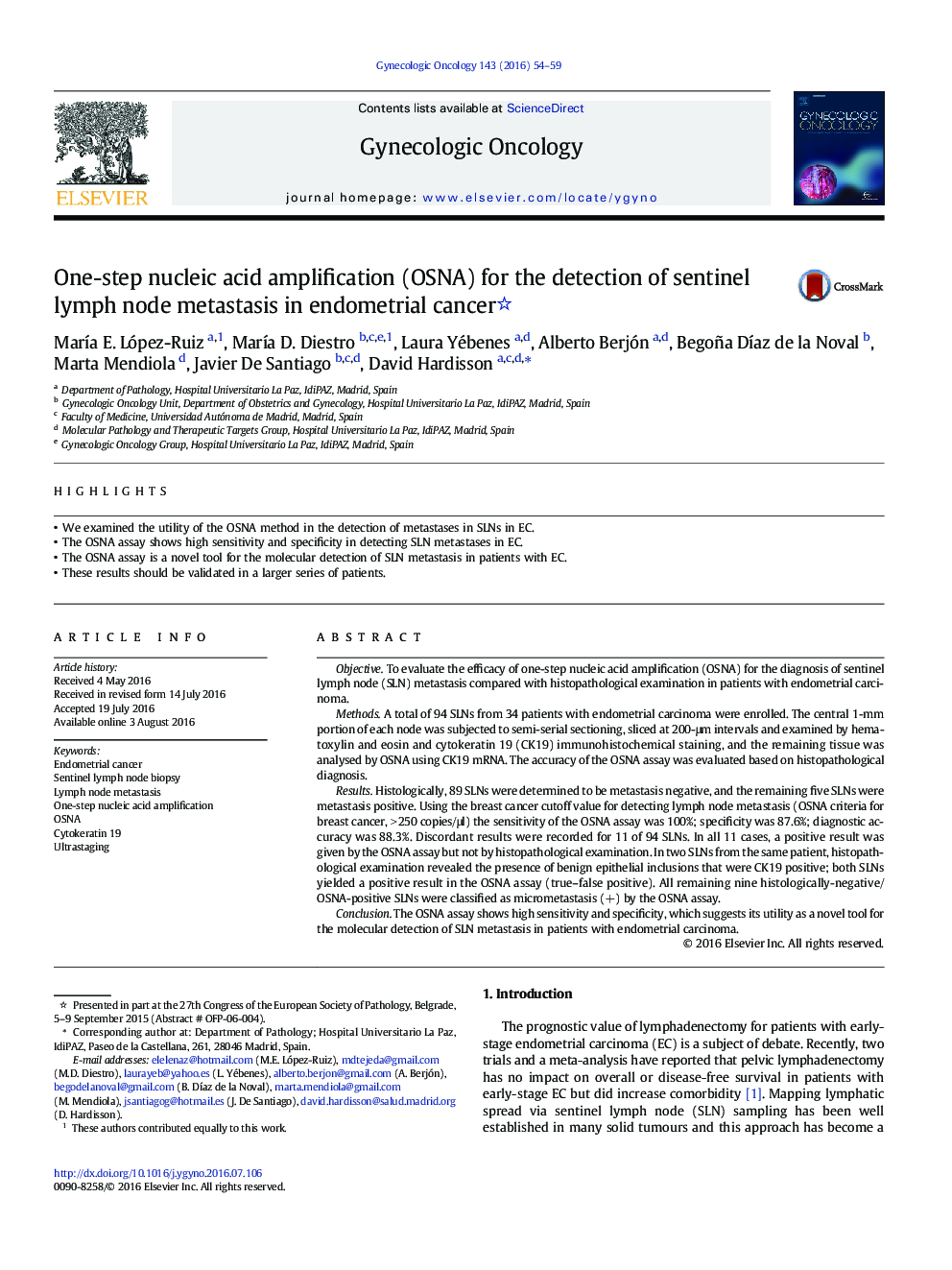| کد مقاله | کد نشریه | سال انتشار | مقاله انگلیسی | نسخه تمام متن |
|---|---|---|---|---|
| 3942407 | 1410079 | 2016 | 6 صفحه PDF | دانلود رایگان |
• We examined the utility of the OSNA method in the detection of metastases in SLNs in EC.
• The OSNA assay shows high sensitivity and specificity in detecting SLN metastases in EC.
• The OSNA assay is a novel tool for the molecular detection of SLN metastasis in patients with EC.
• These results should be validated in a larger series of patients.
ObjectiveTo evaluate the efficacy of one-step nucleic acid amplification (OSNA) for the diagnosis of sentinel lymph node (SLN) metastasis compared with histopathological examination in patients with endometrial carcinoma.MethodsA total of 94 SLNs from 34 patients with endometrial carcinoma were enrolled. The central 1-mm portion of each node was subjected to semi-serial sectioning, sliced at 200-μm intervals and examined by hematoxylin and eosin and cytokeratin 19 (CK19) immunohistochemical staining, and the remaining tissue was analysed by OSNA using CK19 mRNA. The accuracy of the OSNA assay was evaluated based on histopathological diagnosis.ResultsHistologically, 89 SLNs were determined to be metastasis negative, and the remaining five SLNs were metastasis positive. Using the breast cancer cutoff value for detecting lymph node metastasis (OSNA criteria for breast cancer, > 250 copies/μl) the sensitivity of the OSNA assay was 100%; specificity was 87.6%; diagnostic accuracy was 88.3%. Discordant results were recorded for 11 of 94 SLNs. In all 11 cases, a positive result was given by the OSNA assay but not by histopathological examination. In two SLNs from the same patient, histopathological examination revealed the presence of benign epithelial inclusions that were CK19 positive; both SLNs yielded a positive result in the OSNA assay (true–false positive). All remaining nine histologically-negative/OSNA-positive SLNs were classified as micrometastasis (+) by the OSNA assay.ConclusionThe OSNA assay shows high sensitivity and specificity, which suggests its utility as a novel tool for the molecular detection of SLN metastasis in patients with endometrial carcinoma.
Journal: Gynecologic Oncology - Volume 143, Issue 1, October 2016, Pages 54–59
